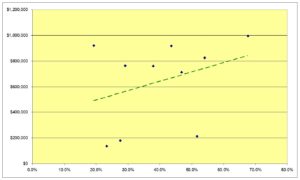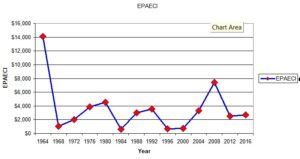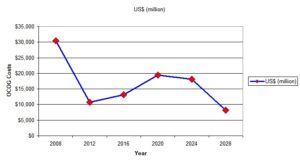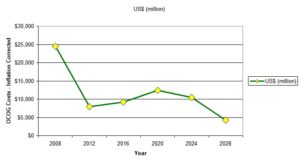This will be somewhat of a different post as it will deal only with USA Olympians. I don’t often do that, trying to always deal with the international set of Olympians but there are some reasons for this.
The post deals with USA Olympians and their college affiliations. This is somewhat unique to the USA that has a strong collegiate sports program, while most other nations focus on club sports.
Further, in some of the work I do with the US Olympic Committee (USOC) I am often asked which states have the most Olympians. That’s a difficult question to answer, trying to tell where somebody is “from.” I am a case in point – born in New Jersey, mostly raised in Massachusetts, lived most of my life in North Carolina, and now live in New Hampshire and South Carolina, I’ve lived in 10 states and 1 Canadian Province. Where the hell am I “from”?
So my default was to list athletes that had been born in a state, died in a state, and attended college in the state, which gave pretty good lists. Unfortunately our database of USA Olympians and their colleges was incomplete.
The reason for that is that we list the affiliations of athletes, but only those at the time of their Olympic participation. So if they attended Harvard, but later competed in the Olympics for the New York Athletic Club, Harvard would not be listed. So I felt like I had to do a fairly complex search to track down as many college affiliations as I could.
It is a Sisyphean task, and one that can never be completed. As I type this, somebody is enrolling in graduate school that I have “missed,” and the list will change yearly, and probably more frequently than that. But with the able assistance of Hilary Evans (@OlyStatman), we’ve come up with very complete lists of USA Olympians and the college affiliations, many of them attending multiple colleges.
As in my day job as a medical journal editor, I must list the inclusion and exclusion criteria. The database we compiled lists USA Olympians only, and only those in medal sports, not including demonstration sports. It does not include USA Olympians who were alternates or did not compete, and it does not include the USA competitors in the Arts Competitions from 1912-48. It also does not include Paralympians.
To be listed with a college affiliation, all we needed to know was if the athlete “attended” such a college – this list says nothing about graduation.
We excluded foreign athletes attending US colleges. Many of our US colleges have hosted foreign athletes who have later competed at the Olympics, but we are not including those, because of the original purpose of the database, as described above.
We excluded coaches, trainers, therapists, physicians, and other ancillary personnel who accompany the Olympic teams. As I attended the greatest university in the United States, and have three degrees from Duke (’73 BA, ’84 MD, ’90 Ortho), I would have liked to include Mike Krzyzewski, and other Duke coaches who have worked at the Olympics, to increase our “Olympian” count, but that is not the purpose of this project.
In summary, the database includes USA Olympians only, who competed in medal sports only, and who attended any known college, USA or otherwise, although the vast majority are US colleges. Many colleges have different lists, including foreign athletes, alternates, demo sport athletes, coaches and affiliate personnel, Paralympians, and others. We have no problems with any such lists, but the purpose of our project was to obtain a list of USA Olympic competitors and their college affiliations so we used the inclusion and exclusion criteria as above.
We have used multiple sources. First we used our Olympedia (www.olympedia.org) database, pulling any college affiliations for USA athletes. We also examined our text bios on the USA Olympians on Olympedia and pulled out the colleges mentioned. Then, we used a USOC database from 1990 that lists college affiliations. All USA Media Guides from 1956-2016 were fully examined. We also checked online lists of colleges and their Olympians. We then were fortunate enough to have contact with CoSIDA (College Sports Information Directors of America), via Doug Vance, their Executive Director, and Bill Hancock, Executive Director of the College Football Playoff. Doug contacted his membership and many of them sent us lists of their Olympians. Thanx to Doug and Bill for their help with this project.
Finally, Hilary Evans (@OlyStatman) did what Hilary always does, and better than anybody, which is find things nobody else can. Hilary went thru the entire list and found many missing and obscure affiliations.
The entire database of USA Olympians and their colleges can be found in the attached Excel spreadsheet (USA Olympians Colleges), but let’s look a little at who the leading colleges are.
The most prominent finding is that California colleges have contributed huge numbers of Olympians to the @TeamUSA effort. In fact the four leading schools, in terms of number of athletes, are: 1) Stanford, 2), UCLA, 3), USC, and 4) Cal Berkeley. Here is the top 20 by # of athletes, games attended, and medals won (Games = # of games attended by their athletes):
[table]
College,Athletes,Games,Medals,Rank
Stanford University,289,408,282,1
UCLA,277,394,241,2
Southern Cal,251,357,228,3
U Cal Berkeley,212,283,201,4
Harvard University,210,276,121,5
Yale University,149,187,113,6
University of Michigan,145,189,131,7
University of Minnesota,140,191,68,8
University of Pennsylvania,131,166,71,9
University of Colorado,128,189,27,10
University of Washington,122,159,72,11
University of Wisconsin,121,172,74,=12
Dartmouth University,121,169,40,=12
The Ohio State University,104,147,98,=14
University of Texas,104,144,123,=14
Indiana University,103,133,95,16
Princeton University,102,135,64,17
Cornell University,92,114,47,18
University of North Carolina,89,121,52,19
Columbia University,80,117,59,20
[/table]
If we break this down by state, one of the original purposes of this search, this becomes even more dramatic. California has almost three times as many Olympians attending college there as the next US state, New York. Here are the top 10 states by # of Olympians:
[table]
State,Athletes,Games,Golds,Medals
California,1668,2363,678,1302
New York,559,795,110,239
Massachusetts,456,604,89,257
Pennsylvania,394,497,67,184
Mchigan,313,415,99,219
Colorado,288,431,28,76
Texas,276,364,157,254
Illinois,238,318,44,120
Minnesota,210,293,22,87
Connecticut,205,262,81,153
[/table]
Pretty dominant for California, isn’t it? Of note, athletes from California colleges have almost as many gold medals and medals as the next 9 highest ranking US states.
What about if we look at Summer and Winter? Surely California colleges cannot have the most Winter Olympians, can they? No, they don’t, that honor going to the University of Minnesota. Here are the lists of the top 10 for Summer and Winter USA Olympians:
[table]
Season,College,Athletes,Games,Gold,Medals
Summer,UCLA,280,396,136,243
Summer,Stanford University,280,394,144,275
Summer,Southern Cal,249,352,114,228
Summer,U Cal Berkeley,202,269,124,199
Summer,Harvard University,160,200,36,85
Summer,Yale University,133,170,52,101
Summer,University of Michigan,129,169,71,121
Summer,University of Pennsylvania,127,162,22,70
Summer,University of Washington,115,149,34,70
Summer,University of Texas,104,144,80,123
[/table]
[table]
Season,College,Athletes,Games,Gold,Medals
Winter,University of Minnesota,93,122,15,49
Winter,Dartmouth University,79,113,5,22
Winter,University of Colorado,61,91,0,9
Winter,Harvard University,50,76,11,36
Winter,University of Utah,46,83,3,9
Winter,University of Wisconsin,44,73,8,32
Winter,University of Vermont,39,61,1,5
Winter,Boston College,37,51,2,20
Winter,Boston University,32,44,5,22
Winter,Northern Michigan University,31,51,4,31
Winter,Westminster College,29,45,2,5
[/table]
What about by gender? Are there any differences among the colleges USA men and women Olympians have attended? Not really big differences, but here are those top 10 lists:
[table]
Gender,College,Athletes,Games,Gold,Medals
Female,UCLA,119,180,74,131
Female,Stanford University,110,163,70,131
Female,Southern Cal,71,111,38,84
Female,U Cal Berkeley,69,102,49,90
Female,University of North Carolina,58,85,22,33
Female,University of Texas,45,61,29,44
Female,University of Wisconsin,42,61,6,29
Female,University of Florida,38,60,30,52
Female,University of Arizona,37,57,28,51
Female,Harvard University,36,58,7,30
[/table]
[table]
Gender,College,Athletes,Games,Gold,Medals
Male,Stanford University,187,255,81,154
Male,Southern Cal,185,252,76,145
Male,Harvard University,183,232,43,100
Male,UCLA,166,223,62,112
Male,U Cal Berkeley,149,189,82,118
Male,Yale University,134,168,53,102
Male,University of Pennsylvania,120,150,19,59
Male,University of Michigan,117,152,66,114
Male,University of Minnesota,111,145,17,46
Male,University of Colorado,97,144,6,21
[/table]
It does get more interesting when we look at sports and years, as many colleges often have certain sports for which they are best known (did I mention Duke and basketball?). Here are the leading 2-3 colleges for each of the sports on the Olympic Program:
[table]
Sport,College,Athletes,Games
Alpine Skiing,University of Colorado,29,40
Alpine Skiing,Dartmouth University,22,31
[/table]
[table]
Sport,College,Athletes,Games
Archery,Arizona State University,5,9
Archery,Texas A&M University,3,7
[/table]
[table]
Sport,College,Athletes,Games
Athletics,Southern Cal,87,121
Athletics,UCLA,72,126
Athletics,Stanford University,54,64
[/table]
[table]
Sport,College,Athletes,Games
Badminton,Arizona State University,5,7
Badminton,UCLA,4,4
[/table]
[table]
Sport,College,Athletes,Games
Baseball,Stanford University,5,5
Baseball,LSU,4,4
[/table]
[table]
Sport,College,Athletes,Games
Basketball,UCLA,15,15
Basketball,University of Tennessee,12,17
Basketball,University of North Carolina,12,13
[/table]
[table]
Sport,College,Athletes,Games
Beach Volleyball,UCLA,13,16
Beach Volleyball,Stanford University,4,7
Beach Volleyball,U Cal Santa Barbara,4,5
[/table]
[table]
Sport,College,Athletes,Games
Biathlon,Dartmouth University,12,15
Biathlon,University of Vermont,5,10
Biathlon,Middlebury College,5,6
[/table]
[table]
Sport,College,Athletes,Games
Bobsledding,SUNY Plattsburgh,8,9
Bobsledding,Cornell University,5,6
[/table]
[table]
Sport,College,Athletes,Games
Boxing,Northern Michigan University,7,7
Boxing,Idaho State University,4,4
Boxing,The Ohio State University,3,3
[/table]
[table]
Sport,College,Athletes,Games
Canoeing,University of Maryland,13,20
Canoeing,Cal State Long Beach,7,9
Canoeing,Dartmouth University,7,8
[/table]
[table]
Sport,College,Athletes,Games
Cross-Country Skiing,Dartmouth University,17,29
Cross-Country Skiing,University of Vermont,12,21
Cross-Country Skiing,Middlebury College,9,14
[/table]
[table]
Sport,College,Athletes,Games
Curling,Bemidji State University,5,6
Curling,University of Wisconsin,4,5
Curling,University of North Dakota,3,3
[/table]
[table]
Sport,College,Athletes,Games
Cycling,University of Colorado,13,16
Cycling,Penn State University,4,7
Cycling,University of Arizona,4,6
Cycling,University of Wisconsin,4,5
Cycling,Cal State Northridge,4,4
Cycling,U Cal Berkeley,4,4
[/table]
[table]
Sport,College,Athletes,Games
Diving,The Ohio State University,21,29
Diving,Indiana University,17,22
Diving,Southern Cal,12,18
[/table]
[table]
Sport,College,Athletes,Games
Equestrian Events,US Military Academy,19,23
Equestrian Events,University of Pennsylvania,3,10
[/table]
[table]
Sport,College,Athletes,Games
Fencing,Columbia University,28,45
Fencing,New York University,25,45
Fencing,University of Pennsylvania,15,25
[/table]
[table]
Sport,College,Athletes,Games
Figure Skating,Harvard University,13,24
Figure Skating,Colorado College,8,11
Figure Skating,University of Colorado,7,9
[/table]
[table]
Sport,College,Athletes,Games
Football,University of North Carolina,20,31
Football,UCLA,17,22
Football,University of Virginia,16,19
[/table]
[table]
Sport,College,Athletes,Games
Freestyle Skiing,University of Utah,11,23
Freestyle Skiing,Westminster College,9,12
[/table]
[table]
Sport,College,Athletes,Games
Golf,Harvard University,3,3
Golf,Columbia University,2,2
Golf,University of Georgia,2,2
[/table]
[table]
Sport,College,Athletes,Games
Gymnastics,UCLA,30,33
Gymnastics,Penn State University,11,12
Gymnastics,University of Illinois,10,15
[/table]
[table]
Sport,College,Athletes,Games
Handball,Adelphi University,7,11
Handball,US Air Force Academy,4,4
[/table]
[table]
Sport,College,Athletes,Games
Hockey,University of North Carolina,17,23
Hockey,Old Dominion University,10,11
Hockey,Princeton University,9,14
[/table]
[table]
Sport,College,Athletes,Games
Ice Hockey,University of Minnesota,68,83
Ice Hockey,Boston College,32,42
Ice Hockey,Harvard University,29,41
[/table]
[table]
Sport,College,Athletes,Games
Judo,San José State University,15,22
Judo,University of Colorado,6,7
[/table]
[table]
Sport,College,Athletes,Games
Luge,University of Montana,5,9
Luge,DeVry University,5,8
[/table]
[table]
Sport,College,Athletes,Games
Modern Pentathlon,US Military Academy,22,23
Modern Pentathlon,University of Texas,3,4
[/table]
[table]
Sport,College,Athletes,Games
Nordic Combined,Dartmouth University,7,8
Nordic Combined,University of Denver,6,6
[/table]
[table]
Sport,College,Athletes,Games
Rowing,Harvard University,72,94
Rowing,University of Washington,66,80
Rowing,U Cal Berkeley,58,67
[/table]
[table]
Sport,College,Athletes,Games
Rugby Football,Stanford University,15,18
Rugby Football,U Cal Berkeley,8,9
Rugby Football,Santa Clara University,5,7
[/table]
[table]
Sport,College,Athletes,Games
Sailing,Harvard University,19,20
Sailing,Yale University,12,17
Sailing,Princeton University,10,12
[/table]
[table]
Sport,College,Athletes,Games
Shooting,West Virginia University,10,16
Shooting,University of Colorado,7,11
Shooting,Troy University,6,10
[/table]
[table]
Sport,College,Athletes,Games
Short-Track Speedskating,Northern Michigan University,19,29
Short-Track Speedskating,University of Colorado,4,6
[/table]
[table]
Sport,College,Athletes,Games
Skeleton,SUNY Plattsburgh,2,3
[/table]
[table]
Sport,College,Athletes,Games
Ski Jumping,Dartmouth University,6,7
Ski Jumping,University of Vermont,4,6
Ski Jumping,University of Wyoming,4,4
[/table]
[table]
Sport,College,Athletes,Games
Snowboarding,Westminster College,5,7
Snowboarding,Colorado Mountain College,3,6
[/table]
[table]
Sport,College,Athletes,Games
Softball,UCLA,11,20
Softball,University of Arizona,4,8
Softball,Cal State Fresno,4,7
[/table]
[table]
Sport,College,Athletes,Games
Speedskating,University of Wisconsin,11,23
Speedskating,University of Minnesota,10,16
Speedskating,Marquette University,7,15
[/table]
[table]
Sport,College,Athletes,Games
Swimming,Stanford University,60,81
Swimming,Southern Cal,59,78
Swimming,University of Texas,51,72
[/table]
[table]
Sport,College,Athletes,Games
Synchronized Swimming,The Ohio State University,5,8
Synchronized Swimming,Stanford University,5,7
Synchronized Swimming,DeAnza College,5,5
[/table]
[table]
Sport,College,Athletes,Games
Table Tennis,Princeton University,2,2
[/table]
[table]
Sport,College,Athletes,Games
Tennis,Stanford University,6,10
Tennis,Harvard University,5,5
[/table]
[table]
Sport,College,Athletes,Games
Volleyball,Southern Cal,24,34
Volleyball,UCLA,19,25
Volleyball,Stanford University,17,27
[/table]
[table]
Sport,College,Athletes,Games
Water Polo,Stanford University,39,64
Water Polo,UCLA,37,52
Water Polo,Southern Cal,27,35
[/table]
[table]
Sport,College,Athletes,Games
Weightlifting,Pikes Peak Community College,4,5
Weightlifting,The Ohio State University,3,6
Weightlifting,University of Illinois,3,6
Weightlifting,Southwestern Louisiana University,3,4
Weightlifting,U Colorado-Colorado Springs,3,3
[/table]
[table]
Sport,College,Athletes,Games
Wrestling,Oklahoma State University,29,37
Wrestling,University of Oklahoma,15,23
Wrestling,Iowa State University,14,15
[/table]
The above are not separated by gender and you can see the female influence in several sports, notably in basketball, where the University of Tennessee ranks highly, and football (soccer), where the University of North Carolina ranks first, both based primarily on their female players.
Certain schools appear frequently on the above lists, as you would expect. Notably, Stanford and UCLA are among the top 3 in 9 sports, while Dartmouth, Harvard, and the University of Colorado are listed in 6 sports.
And here is how the top colleges have changed over the years, looking only at the top USA colleges represented at each Games:
[table]
Season,Year,College,Athletes
Summer,1896,Harvard University,6
Summer,1900,University of Pennsylvania,12
Summer,1904,Christian Brothers’ College St. Louis,11
Summer,,Yale University,11
Summer,1906,Yale University,3
Summer,1908,Cornell University,9
Summer,1912,Cornell University,8
Summer,,Harvard University,8
Summer,1920,US Naval Academy,22
Summer,1924,Stanford University,19
Summer,1928,Southern Cal,13
Summer,1932,Southern Cal,15
Summer,1936,Southern Cal,21
Summer,1948,U Cal Berkeley,14
Summer,,Southern Cal,14
Summer,1952,Southern Cal,17
Summer,1956,Southern Cal,19
Summer,1960,Southern Cal,23
Summer,1964,Southern Cal,26
Summer,1968,UCLA,16
Summer,1972,UCLA,27
Summer,1976,UCLA,31
Summer,1984,UCLA,35
Summer,1984,U Cal Berkeley,16
Summer,1988,UCLA,28
Summer,1992,UCLA,27
Summer,1996,UCLA,35
Summer,2000,UCLA,40
Summer,2004,UCLA,34
Summer,2008,Stanford University,31
Summer,2012,Stanford University,29
Summer,2016,Stanford University,30
[/table]
[table]
Season,Year,College,Athletes
Winter,1920,Dartmouth University,2
Winter,1924,Harvard University,2
Winter,1928,Harvard University,3
Winter,1932,Yale University,7
Winter,1936,Dartmouth University,4
Winter,,Harvard University,4
Winter,1948,Dartmouth University,8
Winter,1952,University of Minnesota,9
Winter,1956,University of Minnesota,7
Winter,1960,University of Minnesota,9
Winter,1964,University of Minnesota,13
Winter,1968,University of Minnesota,10
Winter,1972,University of Colorado,11
Winter,1976,University of Wisconsin,9
Winter,1980,University of Minnesota,9
Winter,1984,University of Minnesota,9
Winter,1988,University of Vermont,7
Winter,1992,Dartmouth University,9
Winter,1994,Northern Michigan University,11
Winter,1998,University of Colorado,12
Winter,2002,University of Utah,12
Winter,2006,University of Utah,11
Winter,2010,Westminster College,18
Winter,2014,Westminster College,19
[/table]
There you can see some trends. In the early years of US Olympic participation the Ivy League schools contributed the most Summer Olympians, while since 1924 it has always been a California school.
Finally, one thing is obvious about this analysis – there have been a lot of smart young men and women on @TeamUSA, but we went a bit further. What about graduate schools?
We have that information as well, broken down by type of graduate or professional school, so here we list the top schools by each type, but also the known number of USA Olympians for each type of graduate or professional school.
[table]
Type,GradProf,Athletes
Business School,Harvard University,8
Business School,Stanford University,6
Business School,University of Pennsylvania,4
Business School,Totals,52
[/table]
[table]
Type,GradProf,Athletes
Chiropractic School,Cleveland Chiropractic College,2
Chiropractic School,Totals,5
[/table]
[table]
Type,GradProf,Athletes
Dental School,Indiana University,1
Dental School,Loyola University New Orleans,1
Dental School,New York University,1
Dental School,Temple University,1
Dental School,The Ohio State University,1
Dental School,University of the Pacific,1
Dental School,Totals,6
[/table]
[table]
Type,GradProf,Athletes
Graduate School,Columbia University,13
Graduate School,Stanford University,10
Graduate School,The Ohio State University,10
Graduate School,University of Pennsylvania,10
Graduate School,Totals,255
[/table]
[table]
Type,GradProf,Athletes
Law School,Harvard University,11
Law School,Columbia University,4
Law School,Cornell University,3
Law School,Stanford University,3
Law School,U Cal Berkeley,3
Law School,University of Chicago,3
Law School,Southern Cal,3
Law School,Totals,70
[/table]
[table]
Type,GradProf,Athletes
Medical School,Harvard University,4
Medical School,University of Pennsylvania,4
Medical School,Columbia University,3
Medical School,Stanford University,3
Medical School,University of Cincinnati,3
Medical School,Totals,69
[/table]
[table]
Type,GradProf,Athletes
Rhodes Scholar,Oxford University (GBR) (Balliol College),2
Rhodes Scholar,Oxford University (GBR) (Magdalen College),2
Rhodes Scholar,Oxford University (GBR) (St. John’s College),2
Rhodes Scholar,Totals,9
[/table]
[table]
Type,GradProf,Athletes
Veterinary School,University of Pennsylvania,2
Veterinary School,Totals,5
[/table]
Impressive that these tremendous athletes, who spend so much time training and competing, have also excelled academically. As to the Rhodes Scholars, there have been 34 known Rhodes Scholars among all Olympians, with 9 of those coming from the United States. Here is that list:
[table]
Name,NOC,Sport,Rhodes
Bill Bradley,USA,BAS,1965 Rhodes Scholar – Worcester College
John Carleton,USA,CCS/NCO,1922 Rhodes Scholar – Magdalen College
Eddie Eagan,USA,BOB/BOX,1922 Rhodes Scholar – New College
Tom McMillen,USA,BAS,1974 Rhodes Scholar – University College
John Misha Petkevich,USA,FSK,1973 Rhodes Scholar – Magdalen College
Annette Salmeen,USA,SWI,1997 Rhodes Scholar – St. John’s College
Bill Stevenson,USA,ATH,1922 Rhodes Scholar – Balliol College
Norm Taber,USA,ATH,1913 Rhodes Scholar – St. John’s College
Alan Valentine,USA,RUG,1922 Rhodes Scholar – Balliol College
[/table]
So that’s it. Full details can be found in the spreadsheet that lists all USA Olympians and their academic affiliations, which is linked above. Let us know if you see any errors or additions. As we stated, the list can never be complete and almost by necessity, is certainly incomplete.




